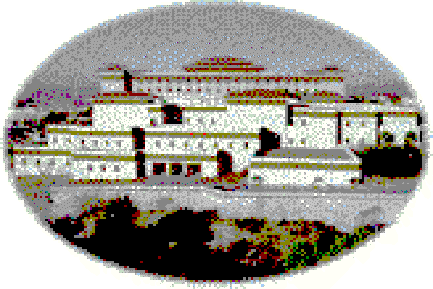
 CIS3355:
Business Data Structures
CIS3355:
Business Data Structures
Fall, 2008
|
|
|
What are ASCII Files?? Wait!! This is dumb question! All files are ASCII files, aren't they?? No, as a matter of fact, there are very few ASCII files, as opposed to non-ASCII files. According to Webopedia an ASCII file is:
What?? Let's first take a look at what a text file is. Suppose I wanted to store the phrase: "Hi, Mom". We already know that each character has a unique bit sequence associated with it. In this case, we would store the phrase (in binary) in a text file as:
(Check the bit sequences in the ASCII table provided) If we were writing this information to an ASCII file, we would store the binary sequences (in order) as: 0100100001101001001011000010110000100000010011100110111101101101 Where each eight bits (from left to right) represents the character being stored. So?? How is that different that how a Microsoft Word file might save them?
Obviously, our friends at Microsoft have their own scheme for storing data retrieving it and analyzing it. They can't store data using 8-bits, since they need to store more than 256 (As we know, 28 = 256 combinations) messages. For the sake of argument, let's assume that they would store this information as: Font, Font Size, string (i.e., "Hi, Mom"), endstring Each of these components might require 32-bits of storage (232 = 4,294,967,296; a fair number of messages). Let's again assume that the sequence of bits needed to store all of this information would be:
011000101011010101011000000110101101010101010101001111000000000000000000000000100 (using 320 bits, since each component requires 32-bits; don't bother trying to figure out the sequence; I've made most of it up) Now, if we try and read this as if it were an ASCII file, we would take 8-bits at a time (from left to right) and analyze the sequence as:
And so on. This is (essentially) what you would see if you were to try and display contents of a Word, or Excel, or any other non-ASCII file using an ASCII Text editor. (Try it! Use an ASCII Text Editor, Such As Notepad, to open up a Word or Excel File and see what happens) So what type of files are these non-ASCII files? once again, our
friends at Webopedia provide us with this definition:
What??? Basically, the users of a binary file know how to interpret the sequence of bits. We don't. You can do that??? That's what data structures are all about. Some good references include: At this point in time, you should be able to Answer the following questions:
[A binary file is] A file stored in binary format. A binary file is computer -readable but not human-readable. All executable programs are stored in binary files, as are most numeric data files. In contrast, text files are stored in a form (usually ASCII) that is human-readable. a. A text file b. A binary file c. Either a Text file or a binary file d. A file that reads 7-bits at a time (i.e., the standard ASCII Character set) e. None of the above Answer: a a. Read 7 bits at time b. Read 8 bits at time c. Read bits as specified d. None of the above e. All of the above Answer: b a. A text file b. An ASCII file c. Either a Text file or an ASCII file d. A file that reads 7-bits at a time (i.e., the standard ASCII Character set) e. None of the above Answer: e a. Read 7 bits at time b. Read 8 bits at time c. Read bits as specified d. None of the above e. All of the above Answer: c
|